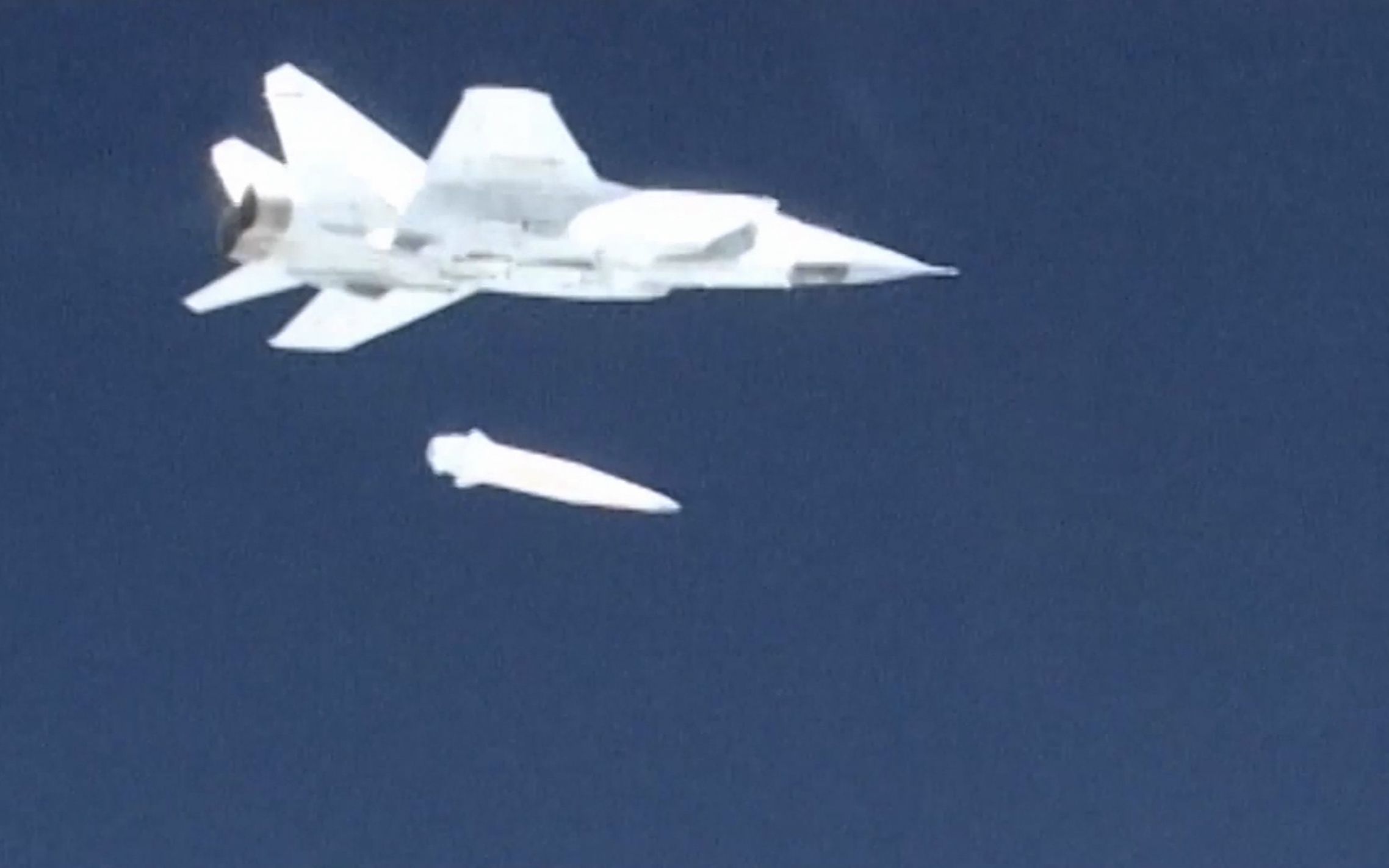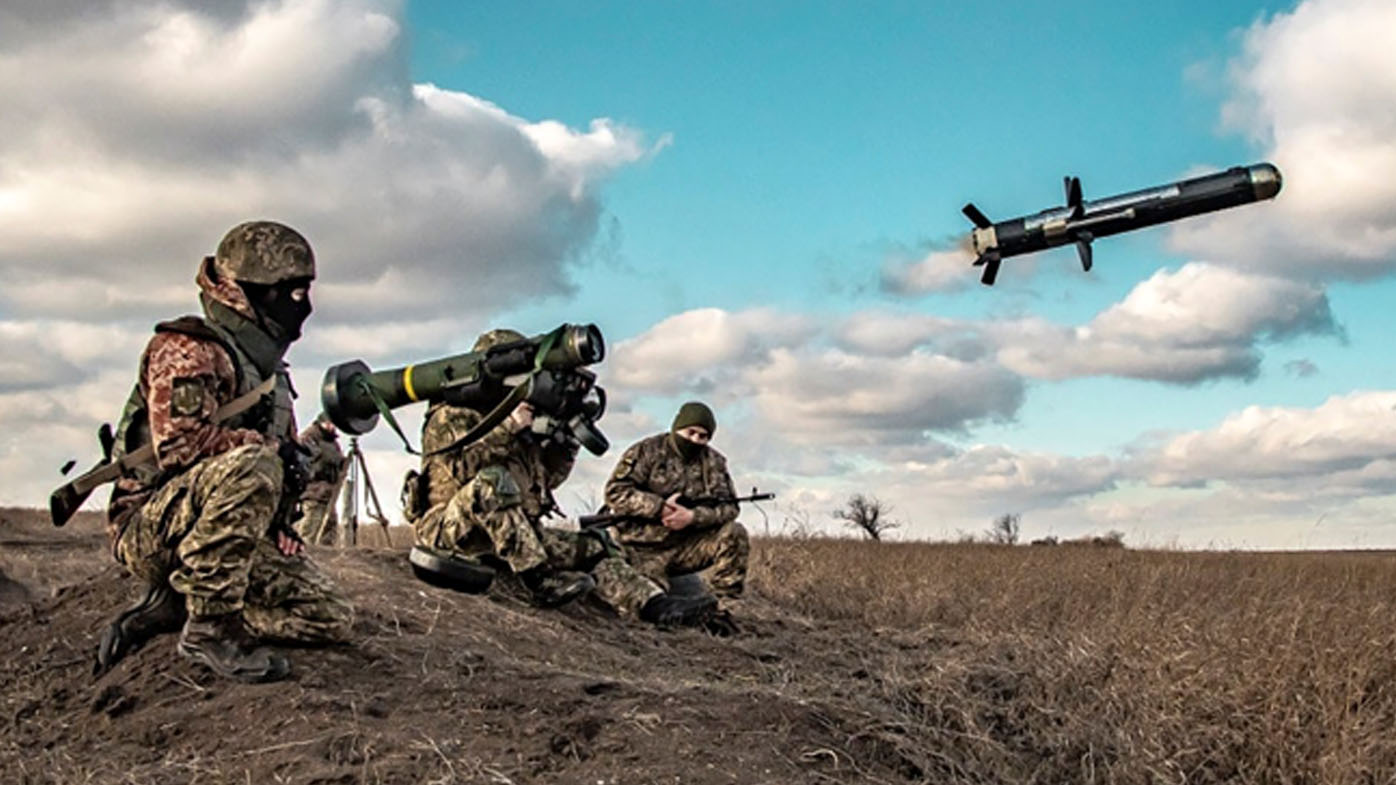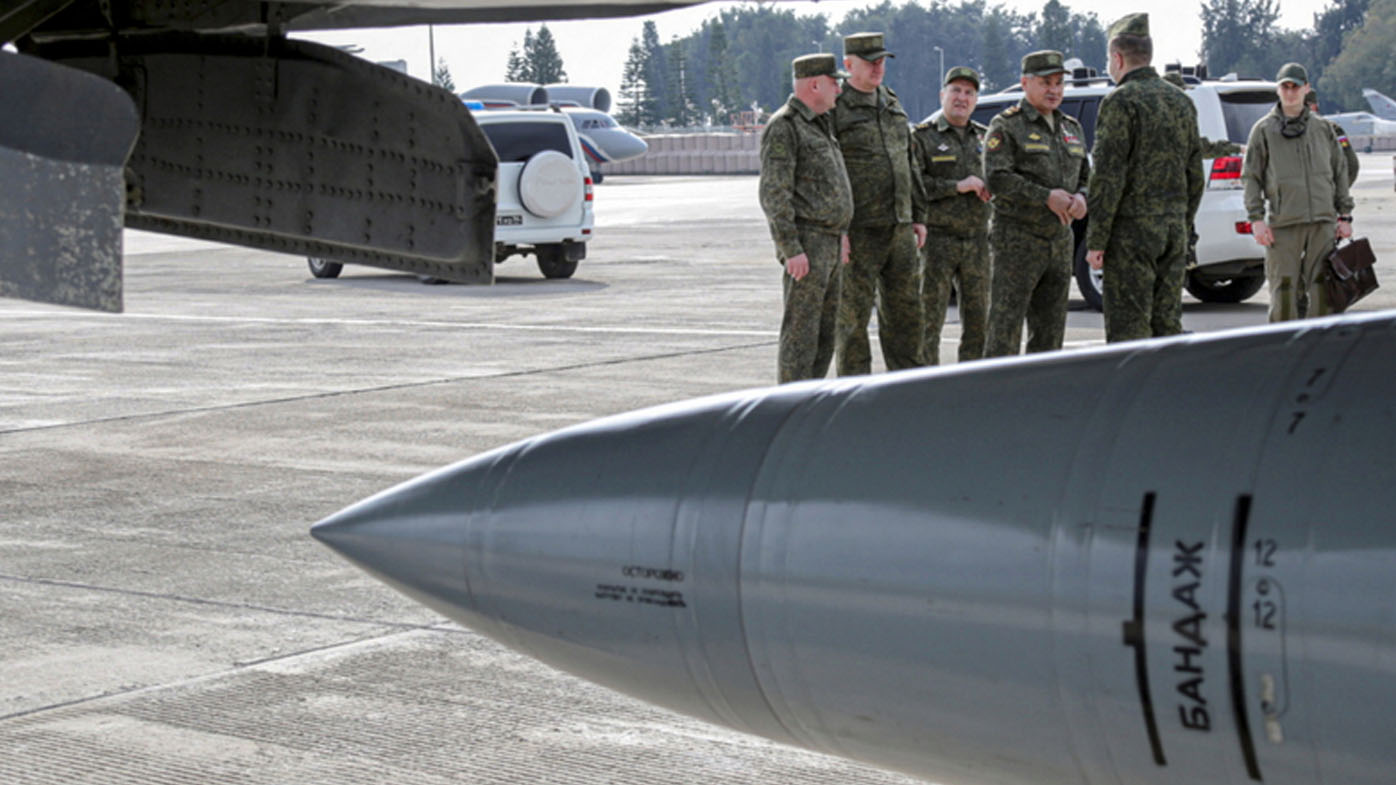Russia has used hypersonic missiles in its invasion of Ukraine, US President Joe Biden has confirmed.
"And if you'll notice, (Russia has) just launched the hypersonic missile, because it's the only thing that they can get through with absolute certainty," Mr Biden said.
"It's a consequential weapon ... it's almost impossible to stop it. There's a reason they're using it."
LIVE UPDATES: Albanese refuses inquiry over Kitching bullying claims

But British intelligence and even Mr Biden's own defence secretary have downplayed Russia's use of its air-launched Kinzhal missiles.
"I would not see it as a game-changer," Pentagon chief Lloyd Austin told CBS on Face the Nation.
And the UK Defence Ministry said the Kinzhal missile is really just an air-launched version of the Iskander short-range ballistic missile (SRBM), which Russia has used repeatedly in its invasion of Ukraine.
READ MORE: The weapons of the Russia-Ukraine conflict

Why the hype about hypersonic missiles?
First, it's important to understand the term.
Essentially, all missiles are hypersonic - which means they travel at least five times the speed of sound.
Almost any warhead released from a rocket kilometres in the atmosphere will reach this speed heading to its target.
It is not a new technology.
What military powers - including Russia, China, the US and North Korea - are working on now is a hypersonic glide vehicle (HGV).
An HGV is a highly manoeuvrable payload that can theoretically fly at hypersonic speed while adjusting course and altitude to fly under radar detection and around missile defences.
READ MORE: Putin ally could soon join Ukraine war, US fears

An HGV is the weapon that's almost impossible to stop.
And Russia is thought to have an HGV in its arsenal, the Avangard system, which Russian President Vladimir Putin in 2018 called "practically invulnerable" to Western air defences.
But the Kinzhal, as a variant of the Iskander SRBM, is not an HGV.
While it does have limited manoeuvrability like the Iskander, its main advantage is that it can be launched from MiG-31 fighter jets, giving it a longer range and the ability to attack from multiple directions, according to a report last year from the Centre for Strategic and International Studies.
"The MiG-31K can strike from unpredictable directions and could avoid interception attempts altogether. The flying carrier vehicle might also be more survivable than the road-mobile Iskander system," the report said.
The same report also noted that the ground-launched Iskander proved vulnerable to missile defence systems during the 2020 Nagorno-Karabakh war, during which Azeri forces intercepted an Armenian Iskander.
"This suggests that claims of the Kinzhal's invulnerability to missile defence systems may also be somewhat exaggerated," the report said.
READ MORE: Top doctors to meet as COVID-19 cases surge across country

Does Ukraine have missile defences?
The US and its NATO allies are already sending several surface-to-air missiles systems to Ukraine to aid in its defence.
According to a senior US official, these additional systems include the Soviet-era SA-8, SA-10, SA-12 and SA-14 mobile air defence systems.
And NATO member Slovakia has agreed to send even better S-300 missile defence batteries to Ukraine once it gets suitable replacements from NATO partners, sources have told CNN.
Why did Putin use the Kinzhal missile?
The launches were likely intended to test the weapons and send a message to the West about Russian capabilities, multiple sources told CNN.
And with the war on the ground in Ukraine becoming a stalemate, Russia may be looking for victories it can tout.
The UK Defence Ministry said Moscow probably deployed the Kinzhal to "detract from a lack of progress in Russia's ground campaign".
